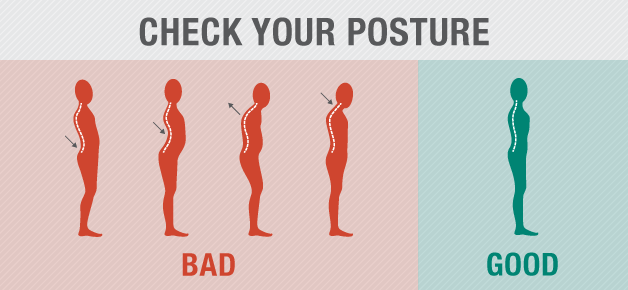4 Ways To Turn Good Posture Into A Better Ride!!

4 Ways To Turn Good Posture Into A Better Ride!!
(Modified from Harvard Health’s (HH) 4 step program for my trucker buddies)
Most truck drivers feel back pain at some point during the day, due to driving day in and day out. You may not ever have had a back injury or done anything except sit most of the day in your truck or at a desk. However, most back problems come from the business of everyday life. Repetitive activities are part of this life we live, such as sitting at a computer or driving a truck many hours a day. You may not do much lifting and you may do minimal carrying, but you still develop tension and muscle tightness, and develop poor posture. Just look at pictures from when you were a teenager and compare them to present photos. Guess what – you look different between 18 and 60 plus years of age!
Remember, you can expect to lose 2 inches in height just from ageing and gravity alone. As you age, stooped shoulders and rounded upper back and neck will produce pain from the neck down to the hips.
The good news is that there is a way to help while driving the truck. There’s a lot we can do to prevent this sort of problem. Staying healthy helps the most. However, physical fitness and a healthy weight are important. But, one surprisingly simple strategy can go a long way – PAYING ATTENTION TO YOUR POSTURE.
Posture is how you hold your body doing all the activities of daily life (ADL). If you’re a truck driver, driving a truck is obviously an activity of daily life and you may be suffering from pain caused by poor posture of the spine and vertebrae that are incorrectly aligned.
Here are 4 steps toward good posture
(taken from the Harvard Health folks this holiday)
Here is what the experts say, and I, Dr. John, do this daily in my truck. I post this for my truck driving friends since you can do these things while driving AND when you stop during the day. Changes I made are for truck drivers, to make his/her life better.
You can improve your posture — and head off back pain — by practicing some imagery and a few easy exercises.
- Imagery. Picture a straight line passing through your body from the ceiling to the floor (your ears, shoulders, hips, knees, and ankles should be even and line up vertically). Now, imagine that a strong cord is attached to the top of your head and is pulling you upward, making you taller when you are driving or standing. Try to hold your pelvis level (this may require an adjustment in the seat, bringing the back support forward — don’t allow the lower back to sway — and resist the urge to slump the back or the neck forward. Instead, think of stretching your head toward the ceiling, increasing the space between your rib cage and pelvis. Picture yourself as a ballerina or ice skater rather than a soldier at attention.
- Shoulder blade squeeze. (my favorite) Sit up straight in a chair/seat with your hands resting on your thighs. Keep your shoulders down and your chin level. Slowly draw your shoulders back and squeeze your shoulder blades together. Hold for a count of five; relax. Repeat three or four times. (Do this when waking as well, since it also tightens your belly muscles)
- Upper-body stretch. Stand facing a corner (corner of the trailer outside the cab door) with your arms raised and hands flat against the walls of the trailer, elbows at shoulder height. Place one foot ahead of the other. Bending your forward knee, exhale as you lean your body toward the corner. Keep your back straight and your chest and head up. You should feel a nice stretch across your chest (always gives me a great pop in my upper back). Hold this position for 20–30 seconds. Relax. (the best relaxation stretch)
- Arm-across-chest stretch. Raise your right arm to shoulder level in front of you and bend the arm at the elbow, keeping the forearm parallel to the floor. Grasp the right elbow with your left hand and gently pull it across your chest so that you feel a stretch in the upper arm and shoulder on the right side. Hold for 20 seconds; relax both arms. Repeat to the other side. Repeat three times on each side.
Practice these imagery and posture exercises throughout the day when stopped or in the shower. You might try to find a good trigger to help you remember, such as doing one or more of them when you get out of your truck, or when stopped at a rest stop or red light. Keep your eyes of the light. Soon it will become a habit says HH.
For more on healing an aching back, you can purchase Back Pain, a Special Health Report from Harvard Medical School. My favorite source of good health care information.
Doc John
